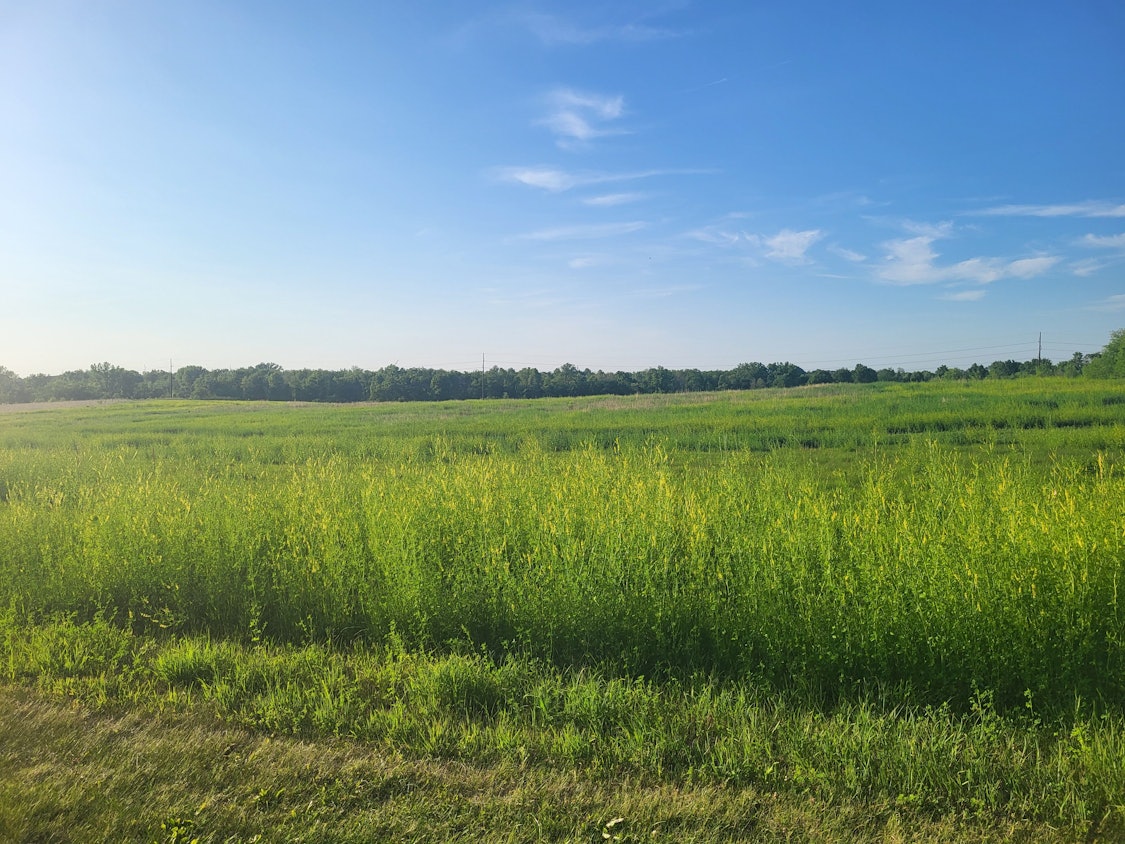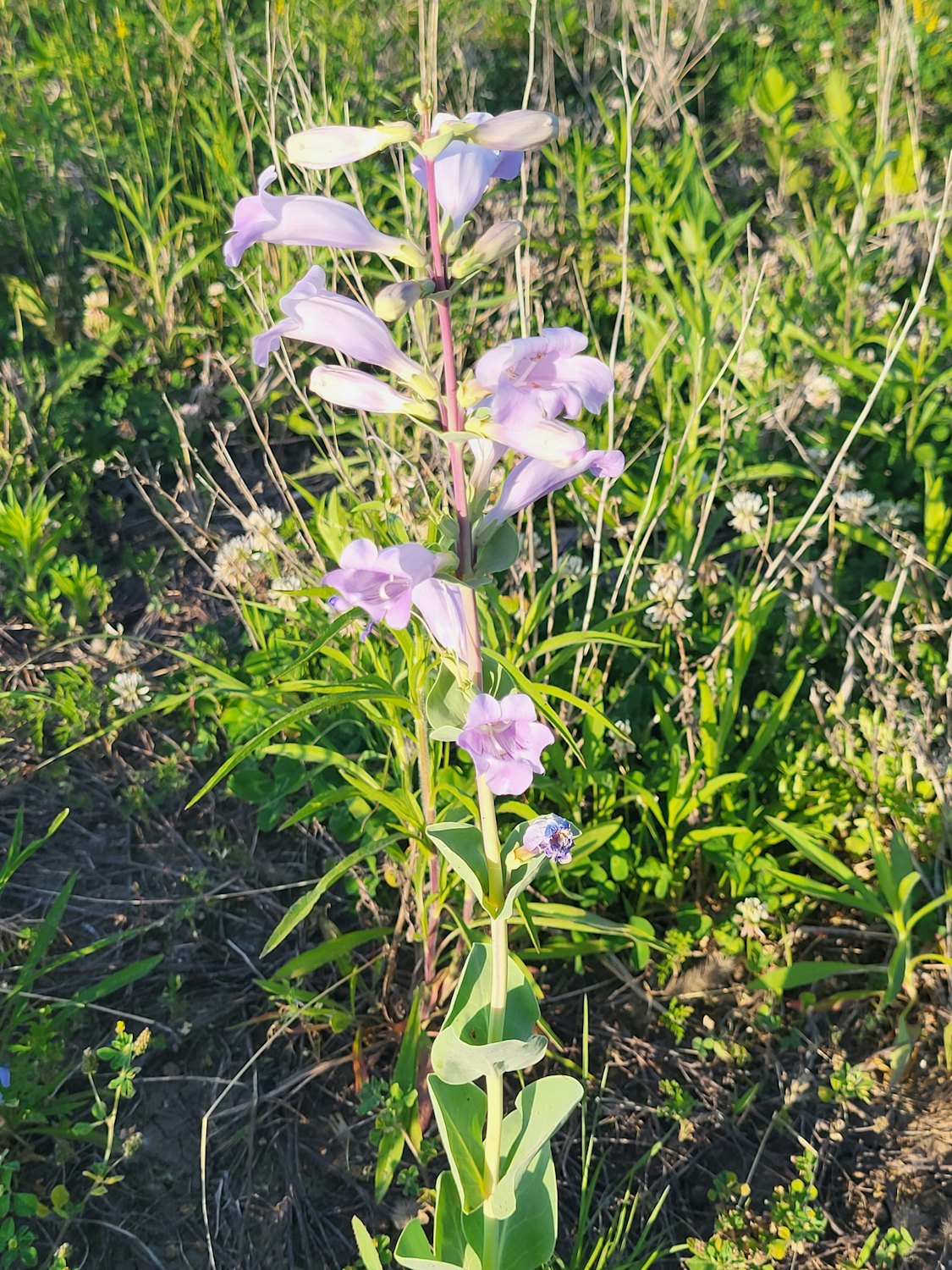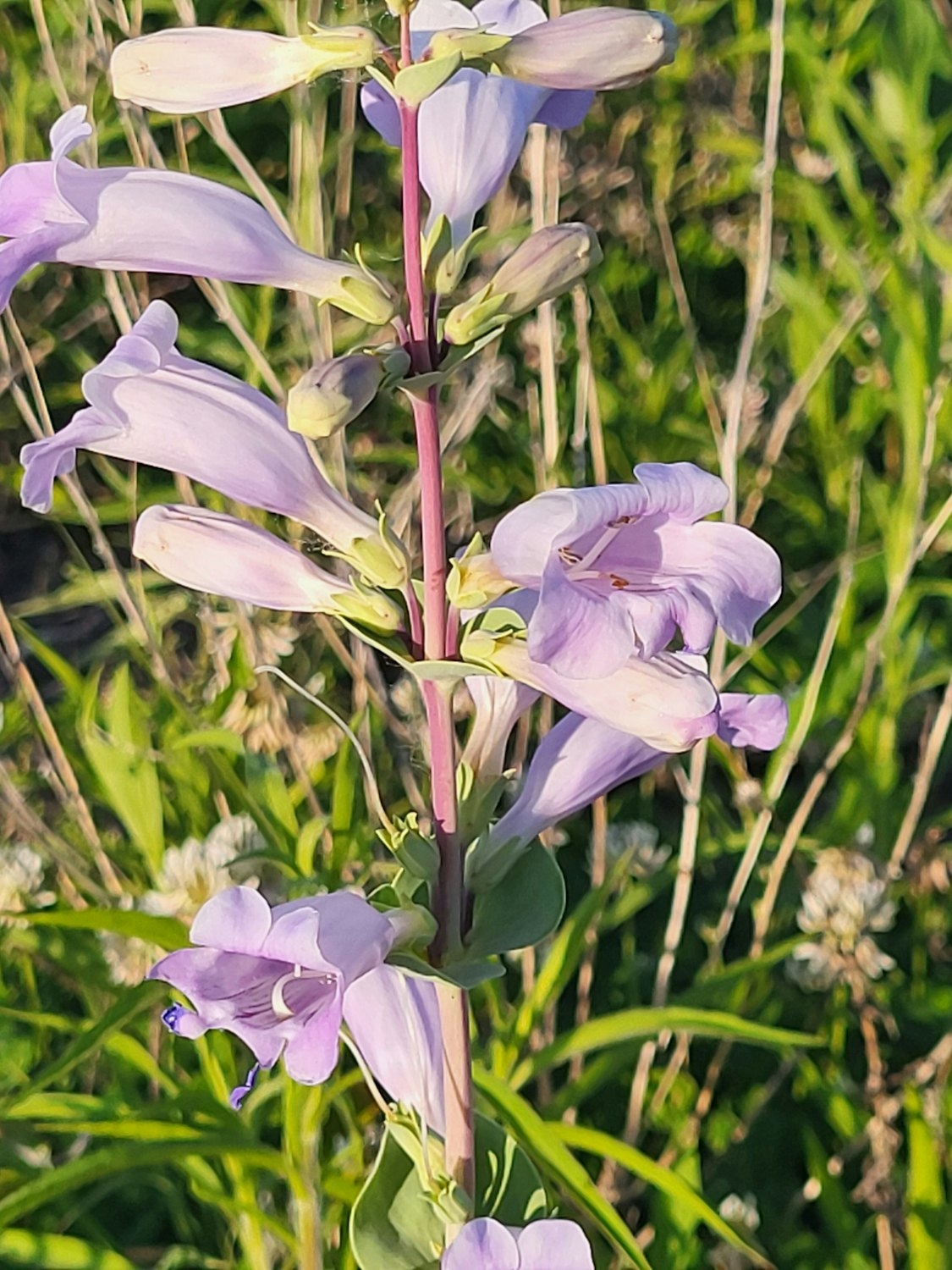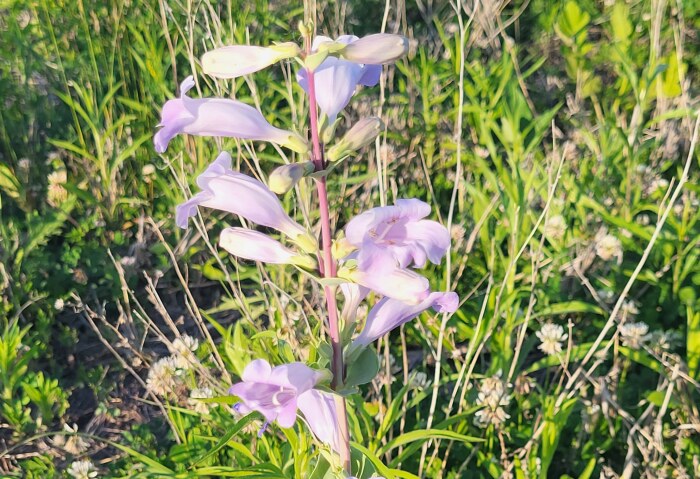Kara Grady is a wildflower enthusiast living in eastern Iowa. Her work has been published in the Erythronium newsletter of the Iowa Native Plant Society. When she’s not going on rare flower adventures, she can be found reading the latest botanical books or attending prairie seminars. At 2:00 pm on Saturday, August 13, Kara will give a presentation for the Loess Hills Wild Ones Chapter: Fall Wildflowers of Iowa. Click here to register.
“Here, Kara.”
I peer at my dad’s phone screen. It shows something vaguely familiar from scrolling many times through the Iowa Wildflowers app. “Huh. It’s some kind of penstemon. Where did you find it?”
I’m more than a little surprised that he even has a picture. When my dad goes walking, he’s usually buried in his phone and never really seems interested in flowers. But this one caught his eye, and after trying to tell me where it was (and me failing to understand), we set out together to find the mystery flower.
This week we’re camping at Morgan Creek Park in Linn County, a place my family has camped at over the summer for almost a decade, yet where my dad takes me is entirely unfamiliar. We tramp past the woods, past the playground on the hill, and come upon what I can tell is a prairie restoration except that it’s covered in yellow clover. It’s almost a monoculture of the spindly yellow flowers, but for last year’s heads of round-headed bush clover and prairie blazing star still interspersed amongst the grasses.

My hands twitch, remembering the feel of a weed-whacker as I cut down yellow clover for weeks last summer. It makes the presence of this one lone penstemon even more surprising.
My knowledgeable dad continues to point out other features as we walk the mowed paths. Follow that one and you’ll come to a lake. This will take you to the arboretum. The trail we’re on loops by another playground before my dad starts sounding worried. He hopes no one picked it.
He finds it again at the very edge of the field of clover. I happily snap photos of the large tube-shaped flowers and take a moment to note the positioning of the leaves. I want to ID the penstemon successfully when we get back to camp.


When we finally return, sweaty and tired, I dive into Iowa Wildflowers, and what I read surprises us both. The type of penstemon my dad found was the large-flowered beardtongue (Penstemon grandiflorus), a wildflower that blooms for only three weeks during early summer. This species is endangered in our neighboring state of Illinois, and according to Prairie Moon Nursery, it is “rare to see in the wild.”
How did such a short-lived plant manage to grow in a field overcome by yellow clover? Was it planted as part of the original restoration seed mix? Or was its seed carried here in the gut tract of a migrating bird?
My questions were cleared up by Daniel Gibbins, Deputy Director of Linn County Conservation. The large-flowered beardtongue was indeed part of the seed mix they used for their prairie restorations. That the field was flush with yellow clover was in response to their spring burning but would continue to die back over the next few years along with the infrequent mowing their team did.
Hearing this gives me hope that campers and park-goers will continue to see more of this rare wildflower and others as the restoration matures. And more people like my dad and I can learn and experience the wonder that is the tallgrass prairie.
Editor’s note: The Illinois Wildflowers and Minnesota Wildflowers websites have more information about large-flowered beardtongue.


3 Comments
I wonder what would come up there
if they burned the field. Liz Garst told me that after they burned some areas at Whiterock Conservancy that had been row cropped for decades, long-dormant prairie plants came out that they hadn’t seeded.
Laura Belin Wed 9 Aug 10:38 PM
I love this!
Now I want to see a drawing of the beautiful flower clusters! (is there a word for that kind of formation?).
greta Fri 11 Aug 9:30 AM
I'm glad that Linn County...
…is keeping records of what species are in the seed mixes they are using for their prairie plantings, and I hope/assume they are keeping records of the sources of the seed as well. And I suspect future botanists and plant geneticists will also appreciate that. Good for Linn County.
PrairieFan Tue 15 Aug 9:35 PM